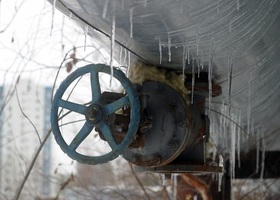Integration of the power system into ENTSO-E is climbing up the agenda: expert
The resilience of Ukraine’s power system in the conditions of the current heating season causes a lot of questions
The problem with electricity supply has occurred in November. Since energy prices are formed through interaction between supply and demand, a declining supply with a growing demand results in the rising prices.
“A good example is prices in the day-ahead market, which in October-November went on the rise,” DiXi Group expert Bohdan Serebrennikov says. “In particular, prices during peak hours often stay at the new price cap recently raised by the regulator: 4000 UAH/MWh. At the same time, it is worth noting that because of objective reasons, prices in the neighboring EU states have also risen significantly, exceeding the prices in Ukraine.”
In ideal conditions, national electricity markets are integrated into a common regional market, like in the EU. In that case, shortages in a particular national market can be offset with imports from other countries.
“In Ukraine, this option is presently limited, because imports from the EU are possible only to the trading area of Burshtynskyi Energy Island (which is only 4% of the Ukrainian electricity market), while imports to the trading area of Ukraine’s IPS may come only from Russia, Belarus and Moldova,” Bohdan Serebrennikov explains. “Moldova has a small power system that often experiences shortages, while Russia, to put it mildly, cannot be considered a reliable partner, because it traditionally poses significant political and economic risks for Ukraine. That leaves Belarus only. Overall, diversification of imports is presently extremely weak, which translates into significant vulnerability and dependence on virtually the only supplier. Under these conditions, full integration of Ukraine’s power system into ENTSO-E grid is climbing up the agenda.”
This season, the maneuvering with thermal power plants does not work well enough. Firstly, in the expert’s opinion, Ukraine experiences a virtually unprecedented situation with critically low coal stocks at thermal power and cogeneration plants this year, which severely restricts the electricity production capabilities (especially during the periods of peak loads in the power grid) and a full-fledged participation in the market. Secondly, like in the previous year, the operability of thermal power plants is significantly limited because of the relatively high rate of accidents at power generating units. Moreover, the accident rate is somewhat higher than in the previous years, which has already caused inspections by the State Inspectorate for Energy Oversight this year. Presently, Ukrenergo NPC again requested these inspections.
As previously reported by Ukrainian Energy, emergency assistance from Belarus and Slovakia was needed because of a number of accidents at DTEK’s power plants.
To avoid a catastrophe, the problem with coal stocks at thermal power plants must be solved, and fast, Bohdan Serebrennikov believes. In the conditions of an immature market, it is also important to establish its thorough monitoring by the energy regulator and the AMCU in order to prevent, as much as possible, unfair competition on part of the market participants, which could artificially distort the market and cause electricity shortages and price hikes.
In addition, the expert continues, electricity imports remain critically important at the moment. Therefore, we must ensure reliable import deliveries, at least from Belarus.
According to data by the Energy Map, 71.74 thousand MWh of electricity was imported last week. The bulk of it (68.95 thousand MWh, or 96%) was imported to Ukraine’s IPS from Belarus. There were also imports from Slovakia. In total, the imports helped meet almost 2.4% of domestic electricity consumption. The above data is for the period of 8-14 November compared to 1-7 November 2021.









